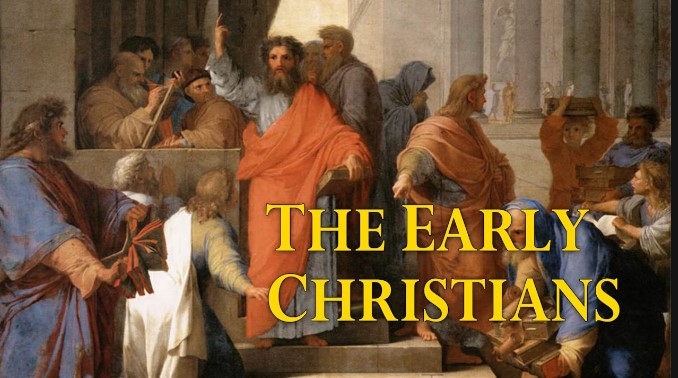Life of Jesus in Synoptic Gospels & John

The Synoptic Gospels (“Good News”) and the Gospel of John
Even though the Gospels appear as the first books of the New Testament, they were not the first books to be written. Most of Paul’s letters were written in the 50s CE while the earliest Gospel Mark is believed to have been written about a decade later, probably 60-70 CE, with Matthew appearing ten to fifteen years later (80-85 CE). John appeared around 95-100 CE.
The New Testament Gospels differ from other ancient world religious biographies with their focus on the death (and resurrection) of their main character Jesus. Since few ancient biographies give any sense of formative influences on a person or on the psychological development of their subjects, scholars often refer to the Christian Gospels as “passion narratives with long introductions.”
Anonymous Authors?
Even though the Gospels go under the names of Matthew, Mark, Luke, and John, many historians believe that they were probably written anonymously by highly educated, literate, Greek-speaking Christians of (at least) the second generation reflecting oral traditions that circulated between Jesus’ death and resurrection and their writing. In recent years, that supposition has been challenged.
While the four canonical Gospels are the primary sources for information about the historical Jesus, works by non-Christian writers including Josephus, Tacitus, Pliny the Younger, and Suetonius provide supplementary context and, in some cases, references to him.
Relationship Between the Four Gospels
The relationship between the Synoptic Gospels (Matthew, Mark, and Luke) and the Gospel of John is complex, complementary, not contradictory. They are similar in that each shares a core set of events (baptism, key teachings, miracles, the Last Supper, crucifixion, and resurrection) in the life of Jessus. They have the same themes – the Kingdom of God, the divinity of Jesus, and the call to discipleship. All four present Jesus firmly rooted in Jewish tradition.
They differ in structure and scope. The Synoptic Gospels provide more chronological and geographical detail about Jesus’ ministry, primarily focused in Galilee. John structures his Gospel around seven key miracles and Jesus’ journeys to Jerusalem, with a heavier emphasis on the final week before his death. In the Synoptics, Jesus often teaches through parables and shorter sayings. John features lengthy theological speeches where Jesus directly proclaims his divine identity and relationship to God.
While both sets of Gospels include miracles, John’s selection of seven “signs” – – are heavily symbolic and designed to point to Jesus’s divine nature. The Synoptic Gospels portray Jesus as a powerful Messiah fulfilling Jewish prophecies and establishing the beginnings of God’s Kingdom. John places a greater emphasis on proclaiming Jesus as the Son of God who offers eternal life through faith in him.
The Synoptic Gospels portray Jesus as a powerful Messiah fulfilling Jewish prophecies and establishing the beginnings of God’s Kingdom. John places a greater emphasis on proclaiming Jesus as the Son of God who offers eternal life through faith in him.
“You shall not turn away from him that is in need, but you shall share all things with your brother and shall not say that they are your own. For if you share what is immortal, how much more things which are temporary?” Didache
Uses of Gospels and Sacred Writings in Early Church
The functions of these early writings were varied and tied to the needs of the first-century Christian communities:
- Teaching and Preaching: Stories of Jesus and his sayings formed the basis of teaching and preaching within early Christian gatherings. This centered on explaining Jesus’ identity as the Messiah and his ethical instructions.
- Worship and Liturgies: Elements found in later Gospels, like the Passion narrative or the Lord’s Supper, likely influenced early Christian worship rituals. Hymns and creeds referencing Jesus may also have been used.
- Apologetics: Engaging with Jewish authorities and a sometimes critical Roman society likely required early Christians to articulate and defend their beliefs about Jesus. Writings would have helped solidify their claims.
- Community Identity: Shared stories and traditions about Jesus served to bind early Christian communities together, offering a common foundation for their beliefs and practices.
Even so, their circulation was limited to low literacy rates and dependence on oral tradition, high cost due to necessary hand-copying, and fragmentation of Christian communities and the lack of structure.
